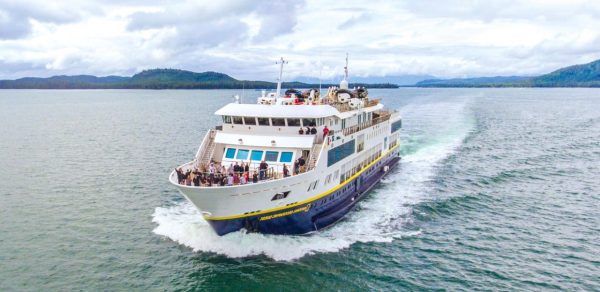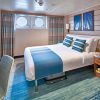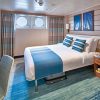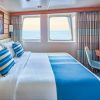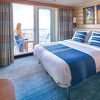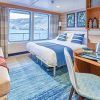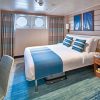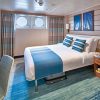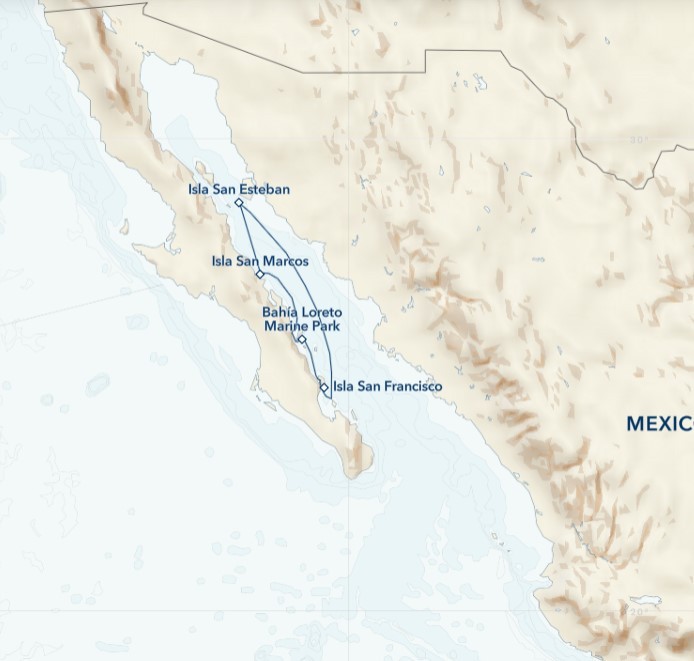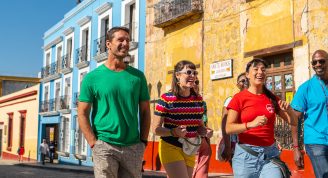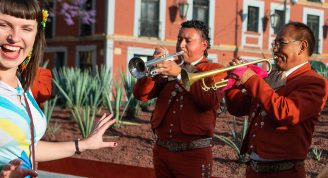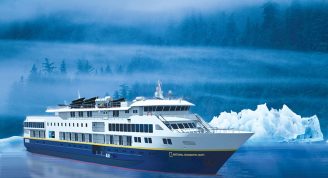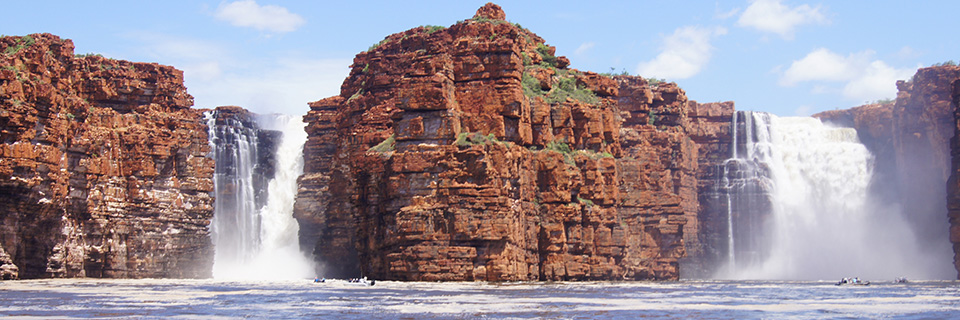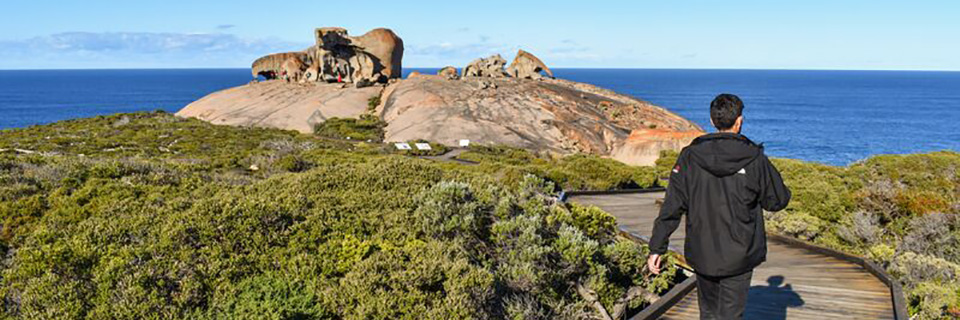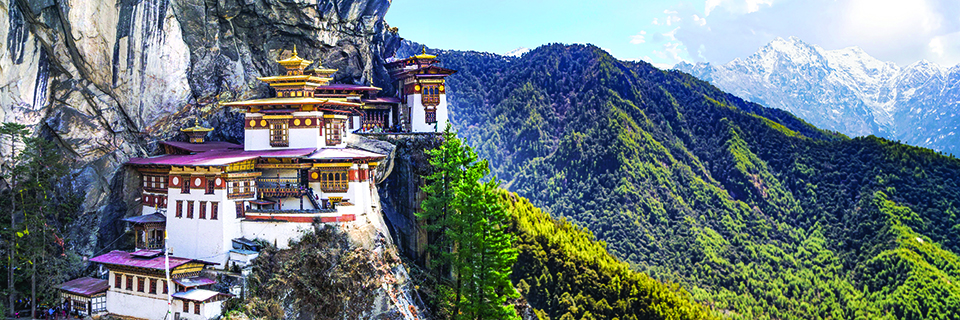Description
Designated by UNESCO as a marine world heritage site and dubbed “the world’s aquarium” by Jacques Cousteau, the waters and islands of the Sea of Cortez are places of legendary biodiversity. This is an expedition of pure discovery, sailing to islands that lie in close proximity to the peninsula but have a palpable feel of rugged isolation. This geographic isolation is the major contributing factor to the long list of endemic plants and animals. And the seas, roiling with productivity, beckon whales—this is, arguably, the best time and place in the world to see a vast variety of whale species plus massive pods of dolphins, leaping Mobula rays, and seabirds.
Trip Name
Baja California Holiday Voyage: A Living Sea and Desert Isles
Days
8
Overview
Vessel Type: Expedition Ship
Passenger Capacity: 100
Built: 2017
National Geographic Venture is the perfect ship to explore Alaska’s Inside Passage and beyond.
Cabins & Suites
The luxury of comfort on expedition
National Geographic Venture comfortably accommodates 100 guests in 50 outside-facing cabins. Cabins are efficiently designed, with sizes range from the 136-square-foot category 1 to the 185-square-foot category 5 suite. Twenty-two of the 50 cabins will feature small balconies with floor-to-ceiling sliding doors that bring in the spectacular views and ample natural light. Twelve cabins will connect via internal doorway access allowing families to combine their rooms. Plus, all category 5 suite cabins can accommodate a third person on a convertible sofa bed.
Comfort & convenience in every room
Every cabin has two portholes, a large window or balcony, Wi-Fi access, and temperature controls. Bathrooms are modern and stocked with botanically inspired hair products, soap, and shower gel, plus a hairdryer. Every room has outlets and USB outlets for charging your camera gear or electronics, and space for luggage storage.
Life Aboard
Dining
Food served aboard is fresh, local, and delicious, and sourced from suppliers who share our values of sustainable use whenever possible. Meals aboard are almost always served in the dining room, located aft of the lounge deck. When weather conditions allow, lighter fare may be served on the observation deck. There is no assigned seating and our dining room accommodates the entire expedition community in a single seating. During meals your expedition leader, naturalists, and any guest speakers aboard will join you.
Public spaces
National Geographic Venture was designed with 50 years of expedition heritage. The ship features a specially-designed, open bow and an observation deck for gathering to watch for wildlife or enjoy an evening cocktail with friends in the open air. An elevator access all decks, and public restrooms are available on every deck.
Bridge: You’re invited to the ship’s bridge to see the calm business of navigation unfold. Ask the watch officer Ventureions about navigation. Or, help yourself to the ever-ready binoculars to scan the horizon for whale spouts. There may occasionally be times when the bridge must be restricted to shipboard personnel only.
Lounge: The lounge is the heart of our expedition community, where we hold cocktail hour and Recap each evening. It’s also where you’ll gather for presentations, photography talks, and guest speaker presentations. Seating design takes advantage of the wraparound windows for an optimal view, and boasts multiple high-definition screens for slideshows and videos. Forward lounge doors provide direct access to the bow. There’s also a small reference library and board games and cards are also available.
Bar: The bar is typically open from 11 a.m. until one hour after lunch begins and from 5 p.m. until closing. A variety of beverages are available for purchase including wine by the glass or bottle, cocktails, specialty drinks, and spirits. There is also a 24-hour self-service beverage station with coffee, tea, soft drinks, beer, water, ice, and snacks. The drinking age aboard the ship is 21.
Sundeck: Morning stretch classes are held in the open air of the sundeck, located aft on the observation deck. After stretch class the deck is set with tables and chairs, and lounge chairs.
Bow: National Geographic Venture’s specially-designed bow observation area accommodates the entire expedition community at once for a shared wildlife viewing experience.
Mud room: Located aft on the main deck where you will embark and disembark expedition landing craft, the mud room has lockers that provide convenient gear and boot storage.
Wellness aboard
Making daily discoveries and exploring the wild world is naturally uplifting. Add to that a variety of wellness treatments available aboard, as well as outings led by your wellness specialist, and you’ll find your expedition relaxing as well as revitalizing. Massages, body treatments, natural facial treatments, and hand and foot treatments are all available in the LEXspa. You will have the opportunity to sign up for a treatment once on board.
Fitness Center: Conveniently located on the lounge deck, the fitness center is outfitted with two treadmills, exercise bikes, elliptical machines, exercise bands, and sets of small hand weights to use as well.
The global gallery: a window on regional talent
Discover the talent of local artisans in the places National Geographic Venture ventures in the ship’s global market. The global market is a collection of items made by local residents in the places we explore. It is conveniently located on the ship’s lounge deck. You may find silver jewelry crafted in Alaska, woven baskets from Panama, paintings and books by your naturalist staff, plus expedition clothing and other essentials. Every item purchased in the global market contributes to the Lindblad Artisan Fund, which supports artisans in communities around the world to develop their potential more effectively and successfully. Five percent of all National Geographic Venture’s global market sales will be earmarked for this fund, and the Lindblad-National Geographic Fund will match dollar for dollar what is raised through these earmarks.
Tools for Exploration
Expedition Landing Craft
Key to our operation is our fleet of expedition landing craft, which we use to land in places that would otherwise be inaccessible. With 8 of these boats and two loading stations used every time we disembark, we’re able to transfer guests off the ship quickly, so you can be out on adventures, not idly waiting. The expedition landing craft we use are 19 feet long, powered by four-stroke outboard engines, and are capable of comfortably carrying 10-12 people. They are widely recognized as the safest and most versatile small boats afloat.
Remotely Operated Vehicle
Capable of reaching 1,000 feet, far beyond the range of any Scuba diver, the ROV allows you to literally view parts of the undersea that are as unexplored as the moon. Chances are you, like many of our guests, will be struck by how surprisingly colorful undersea life is in these unlikely places. And this glimpse may fundamentally change how you view the ocean.
Kayaks
National Geographic Venture is equipped with 24 two-person kayaks—a fleet large enough to ensure everyone who wants to can paddle at every opportunity.
Consequently, prior kayaking experience isn’t necessary—many of our guests have their first kayaking experience in extraordinary locations. Our custom-designed floating platform lets us deploy kayaks from the ship, or any location we want—including far from shore. Kayakers are usually free to explore where they want within boundaries set by the undersea specialist and officer of the watch.
Underwater camera
Our undersea specialist will dive often during your expedition, even in Alaska, with cold-water gear, to shoot high-definition, Cousteau-like footage of the deep. Colorful nudibranchs, swimming, plant-like crinoids, and mysterious fish with antifreeze blood that thrive in the frigid sea will give you an entirely new appreciation of the marine environment.
Video microscope
Naturalists will use the video microscope to help explain all elements of the environment, including tiny organisms that are the building block of the marine ecosystem. Spellbinding live views of krill at 80x magnification fills the high-definition screens in the lounge with vivid detail, and fills every onlooker with a sense of wonder at the importance of otherwise unobservable creatures.
Hydrophone
This underwater microphone is deployed to listen to the vocalizations of marine mammals. Real time transmissions of their eerie, haunting sounds can be broadcast through the ship or recorded for later playback. Few experiences in nature are as captivating as watching humpback whales feed close to the ship as their vocalizations play through the ship’s PA system.
Electronic charts
An electronic chart showing the ship’s location, course, and speed is almost always on display in the lounge.
Open bridge
You’ll find our captains are engaged, knowledgeable members of your expedition who are eager to share their passion with you. Venture’s open bridge features comfortable spaces to sit, enjoy the view, drink your morning coffee, or simply chat with the officers.
Snorkeling gear & wetsuits
On warm weather itineraries where there will be snorkeling, you’ll select a mask, snorkel, fins, and wetsuit that remain yours for the duration of the expedition. There’s no need to pack and tote your own gear, although guests who prefer to are welcome to bring their own.


